Abstract
Human colonic muscle tone varies diurnally and postprandially in predictable ways. Increased tone reduces the capacity of the colon to store contents after a meal, whereas increased distensibility (lesser tone) during sleep enlarges the storage capabilities and may slow transit. We tested the hypothesis that antidiarrhoeal drugs would also alter tone which, in turn, might reduce diarrhoea by facilitating the storage and salvage of fluids. Using a colonic barostat to create low pressure, isobaric colonic distension in healthy volunteers, we found that intravenous atropine (0.01 mg/kg) relaxed the colon during fasting, reduced the postprandial increase in tone, and enhanced relaxation in the late (1-2 hour) postprandial period. Intravenous morphine (0.1 mg/kg) caused variable effects soon after injection but, in fasting subjects, the descending colon relaxed 70-90 minutes after morphine. These changes in colonic motility were not always obvious by conventional manometric recording. Colonic distensibility is increased by antidiarrhoeal drugs and this effect may contribute to their efficacy in slowing colonic transit and augmenting absorption.
Full text
PDF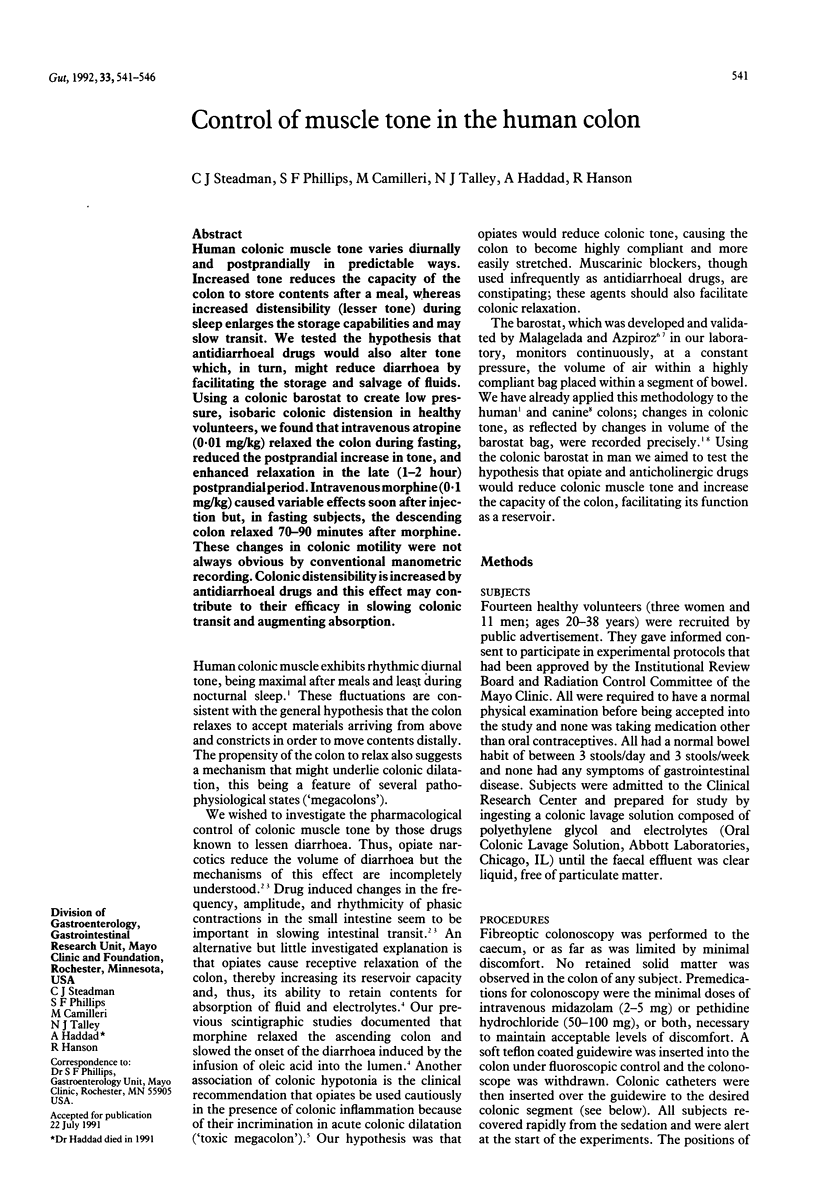
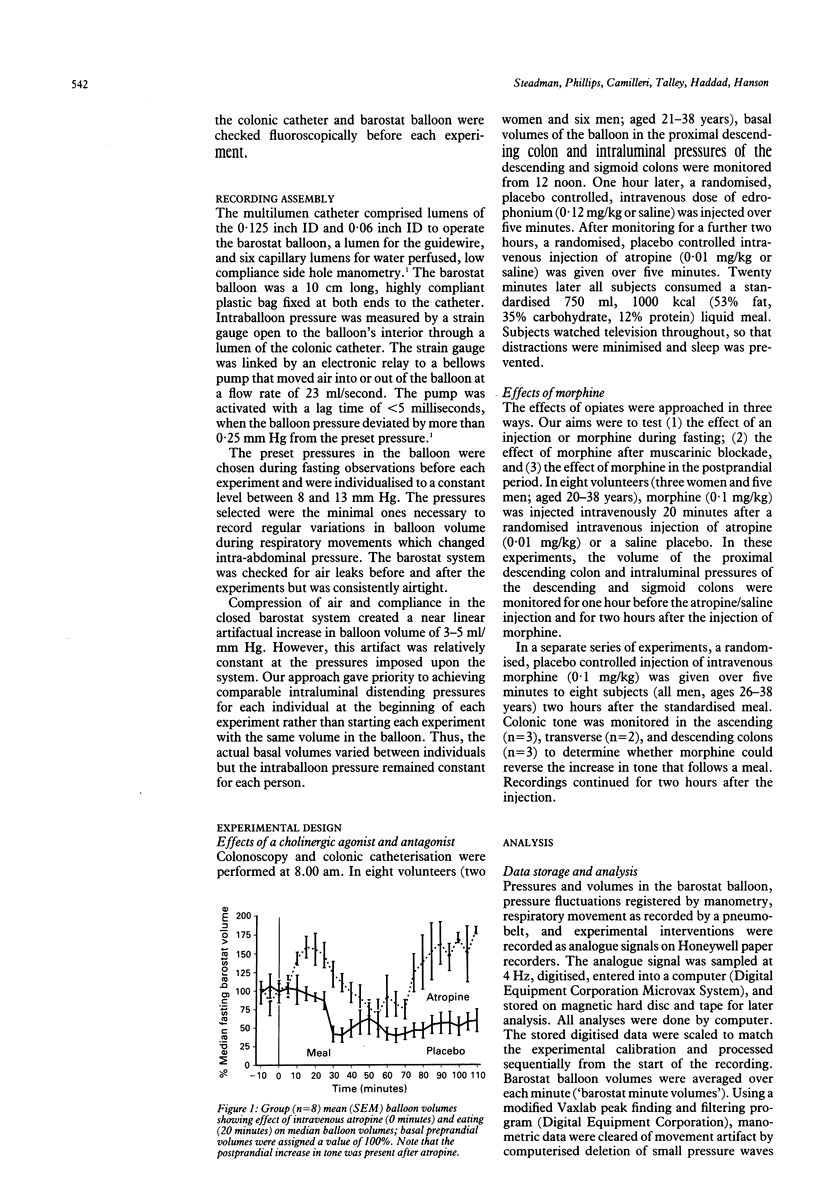
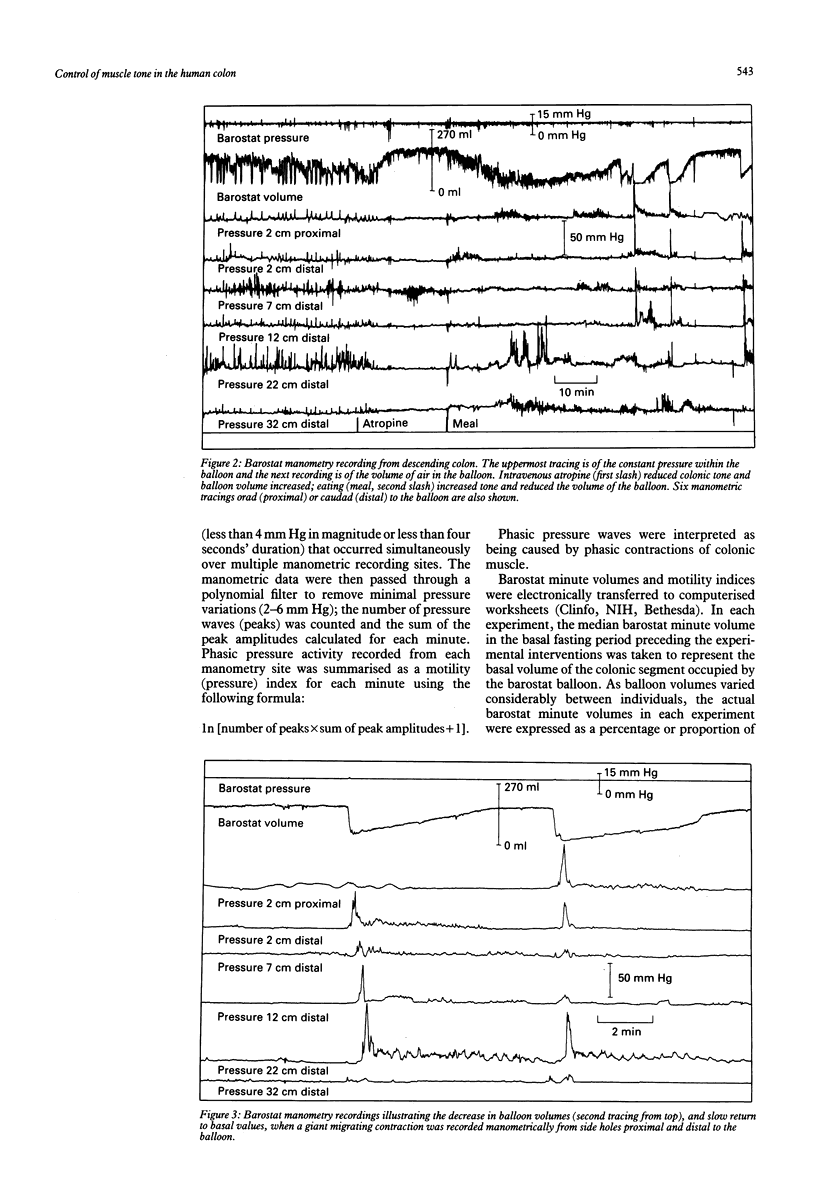
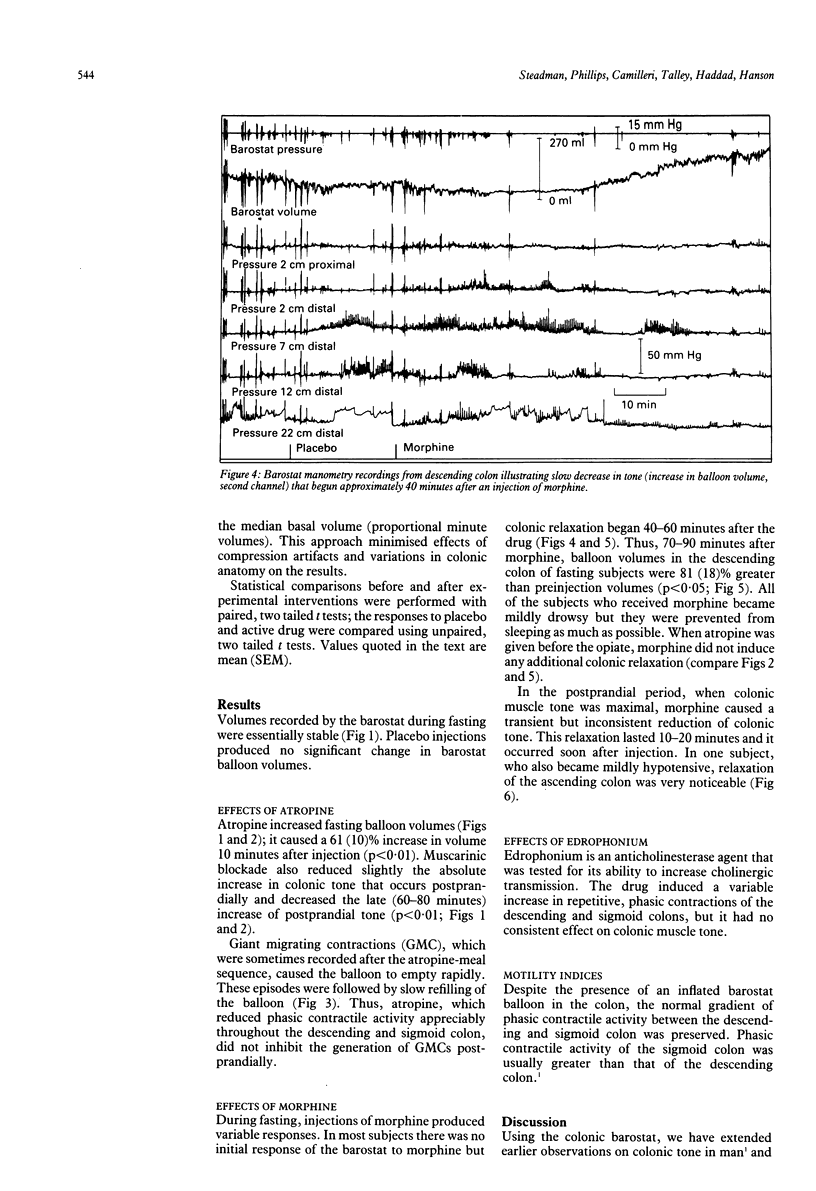
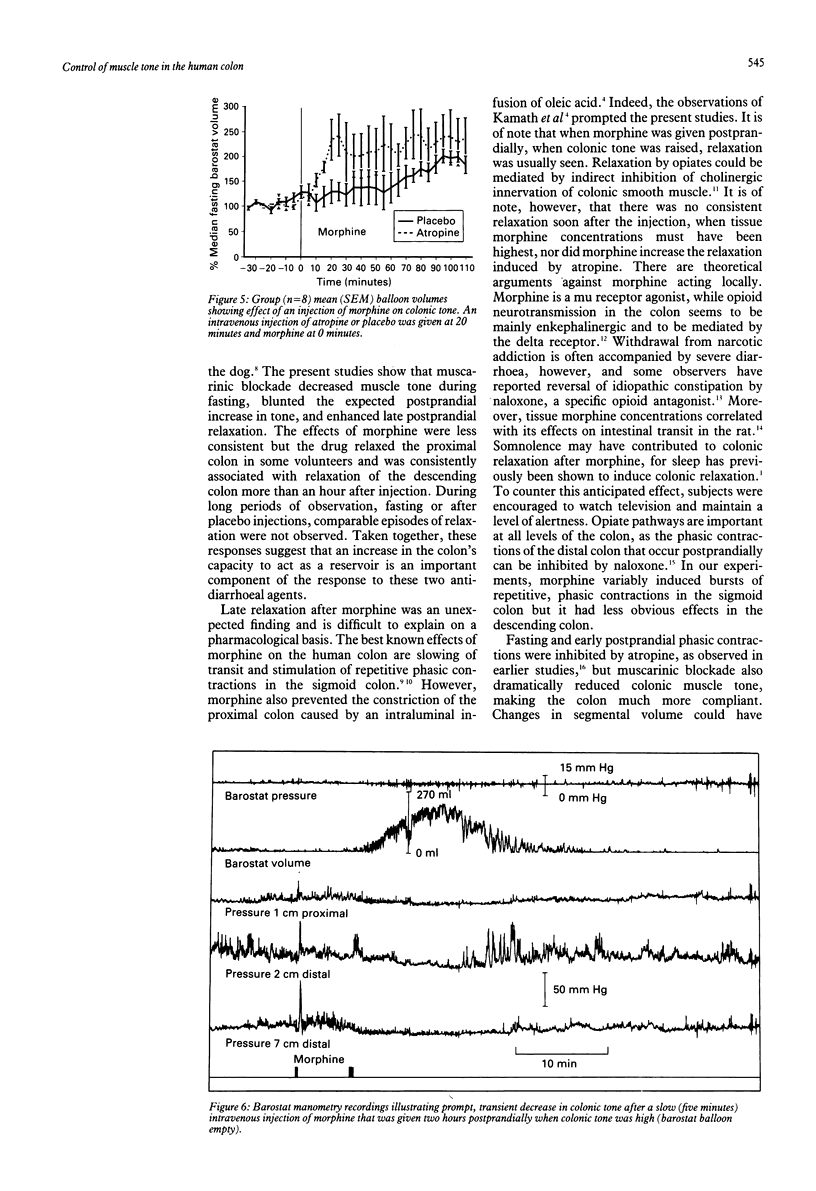
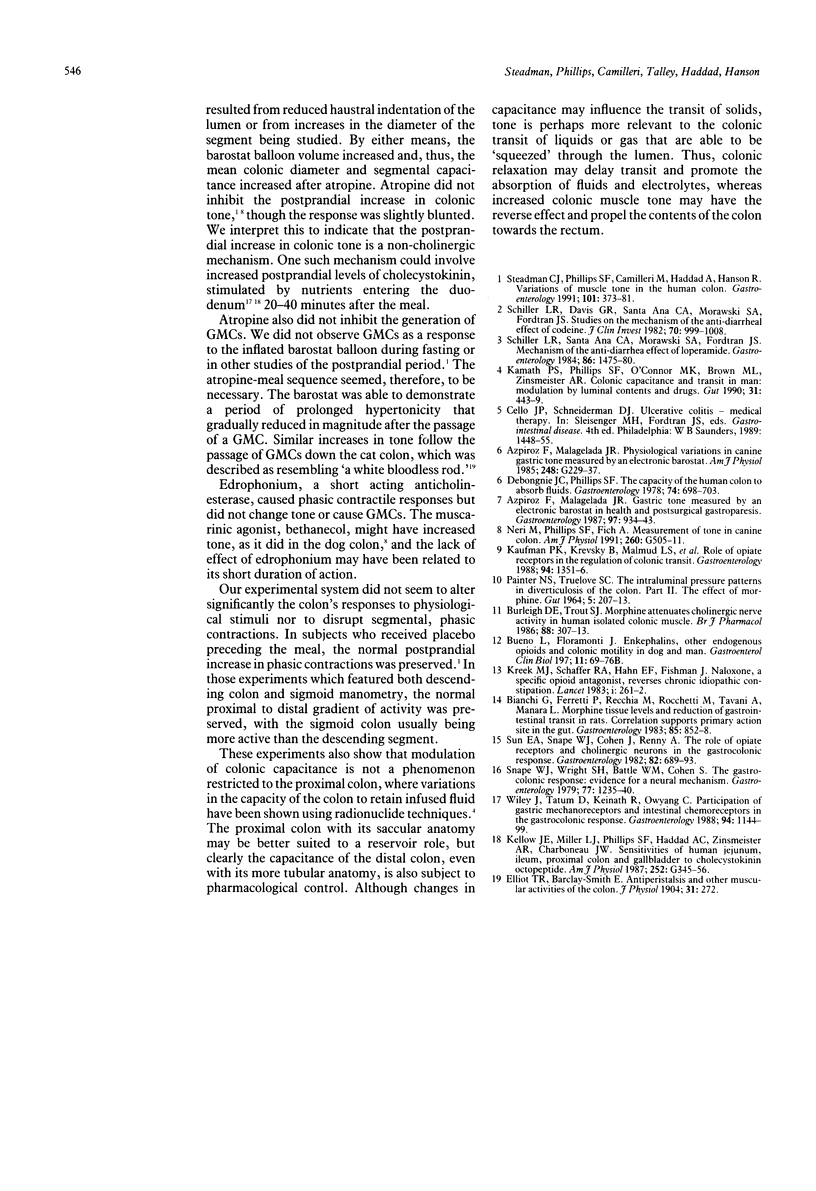
Selected References
These references are in PubMed. This may not be the complete list of references from this article.
- Azpiroz F., Malagelada J. R. Gastric tone measured by an electronic barostat in health and postsurgical gastroparesis. Gastroenterology. 1987 Apr;92(4):934–943. doi: 10.1016/0016-5085(87)90967-x. [DOI] [PubMed] [Google Scholar]
- Azpiroz F., Malagelada J. R. Physiological variations in canine gastric tone measured by an electronic barostat. Am J Physiol. 1985 Feb;248(2 Pt 1):G229–G237. doi: 10.1152/ajpgi.1985.248.2.G229. [DOI] [PubMed] [Google Scholar]
- Bianchi G., Ferretti P., Recchia M., Rocchetti M., Tavani A., Manara L. Morphine tissue levels and reduction of gastrointestinal transit in rats. Correlation supports primary action site in the gut. Gastroenterology. 1983 Oct;85(4):852–858. [PubMed] [Google Scholar]
- Burleigh D. E., Trout S. J. Morphine attenuates cholinergic nerve activity in human isolated colonic muscle. Br J Pharmacol. 1986 Jun;88(2):307–313. doi: 10.1111/j.1476-5381.1986.tb10206.x. [DOI] [PMC free article] [PubMed] [Google Scholar]
- Debongnie J. C., Phillips S. F. Capacity of the human colon to absorb fluid. Gastroenterology. 1978 Apr;74(4):698–703. [PubMed] [Google Scholar]
- Elliott T. R. Antiperistalsis and other muscular activities of the colon. J Physiol. 1904 Jun 30;31(3-4):272–304. doi: 10.1113/jphysiol.1904.sp001037. [DOI] [PMC free article] [PubMed] [Google Scholar]
- Kamath P. S., Phillips S. F., O'Connor M. K., Brown M. L., Zinsmeister A. R. Colonic capacitance and transit in man: modulation by luminal contents and drugs. Gut. 1990 Apr;31(4):443–449. doi: 10.1136/gut.31.4.443. [DOI] [PMC free article] [PubMed] [Google Scholar]
- Kaufman P. N., Krevsky B., Malmud L. S., Maurer A. H., Somers M. B., Siegel J. A., Fisher R. S. Role of opiate receptors in the regulation of colonic transit. Gastroenterology. 1988 Jun;94(6):1351–1356. doi: 10.1016/0016-5085(88)90673-7. [DOI] [PubMed] [Google Scholar]
- Kellow J. E., Miller L. J., Phillips S. F., Haddad A. C., Zinsmeister A. R., Charboneau J. W. Sensitivities of human jejunum, ileum, proximal colon, and gallbladder to cholecystokinin octapeptide. Am J Physiol. 1987 Mar;252(3 Pt 1):G345–G356. doi: 10.1152/ajpgi.1987.252.3.G345. [DOI] [PubMed] [Google Scholar]
- Kreek M. J., Schaefer R. A., Hahn E. F., Fishman J. Naloxone, a specific opioid antagonist, reverses chronic idiopathic constipation. Lancet. 1983 Feb 5;1(8319):261–262. doi: 10.1016/s0140-6736(83)91684-7. [DOI] [PubMed] [Google Scholar]
- Neri M., Phillips S. F., Fich A. Measurement of tone in canine colon. Am J Physiol. 1991 Mar;260(3 Pt 1):G505–G511. doi: 10.1152/ajpgi.1991.260.3.G505. [DOI] [PubMed] [Google Scholar]
- Schiller L. R., Davis G. R., Santa Ana C. A., Morawski S. G., Fordtran J. S. Studies of the mechanism of the antidiarrheal effect of codeine. J Clin Invest. 1982 Nov;70(5):999–1008. doi: 10.1172/JCI110711. [DOI] [PMC free article] [PubMed] [Google Scholar]
- Schiller L. R., Santa Ana C. A., Morawski S. G., Fordtran J. S. Mechanism of the antidiarrheal effect of loperamide. Gastroenterology. 1984 Jun;86(6):1475–1480. [PubMed] [Google Scholar]
- Snape W. J., Jr, Wright S. H., Battle W. M., Cohen S. The gastrocolic response: evidence for a neural mechanism. Gastroenterology. 1979 Dec;77(6):1235–1240. [PubMed] [Google Scholar]
- Steadman C. J., Phillips S. F., Camilleri M., Haddad A. C., Hanson R. B. Variation of muscle tone in the human colon. Gastroenterology. 1991 Aug;101(2):373–381. doi: 10.1016/0016-5085(91)90014-c. [DOI] [PubMed] [Google Scholar]
- Sun E. A., Snape W. J., Jr, Cohen S., Renny A. The role of opiate receptors and cholinergic neurons in the gastrocolonic response. Gastroenterology. 1982 Apr;82(4):689–693. [PubMed] [Google Scholar]
- The intraluminal pressure patterns in diverticulosis of the colon: Part II The effect of morphine. Gut. 1964 Jun;5(3):207–213. doi: 10.1136/gut.5.3.207. [DOI] [PMC free article] [PubMed] [Google Scholar]
- Wiley J., Tatum D., Keinath R., Chung O. Y. Participation of gastric mechanoreceptors and intestinal chemoreceptors in the gastrocolonic response. Gastroenterology. 1988 May;94(5 Pt 1):1144–1149. doi: 10.1016/0016-5085(88)90005-4. [DOI] [PubMed] [Google Scholar]


